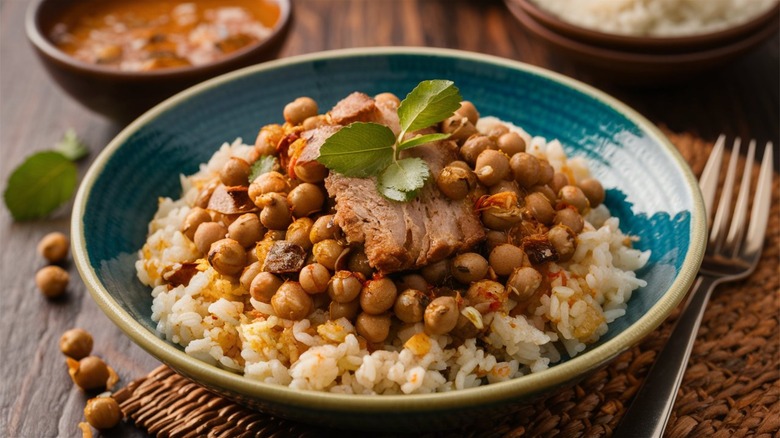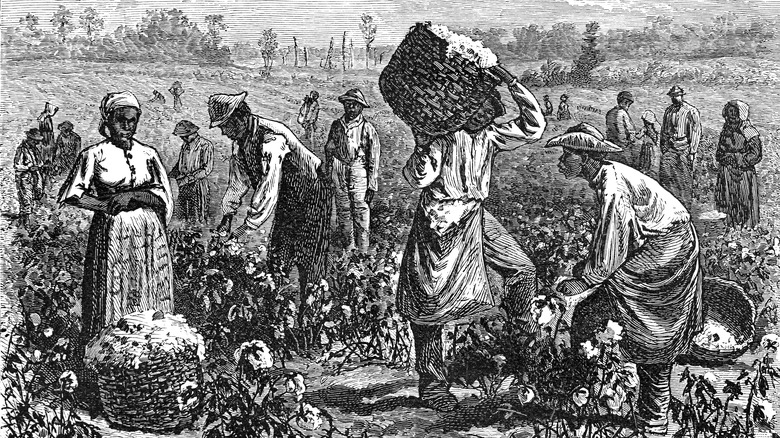The Origin Of The Classic Southern Dish Hoppin' John
Few dishes say Southern New Year's like Hoppin' John, a dish rooted in tradition and local legend. The warm, homely meal is a Low Country dish that features black-eyed peas, rice, and sausage or ham. The dish often incorporates Carolina Gold rice, which has a storied history just like Hoppin' John, though there are numerous variations, as some use different types of beans or meat.
Classic Hoppin' John wasn't always a Southern New Year's staple, however. The dish traces its origins back to the slave trade, which also brought over West African foods like black-eyed peas during the late 17th century. Enslaved West African referred to the dish as thiebou niebe or dab-a-dab, which contained rice and beans along with vegetables, meat, and peppers, a precursor to the modern Hoppin' John. However, it would be over a century before Hoppin' John would develop the name it is known by today.
How Hoppin' John got its name
The origins of the name "Hoppin' John" are rooted in legend, with multiple stories crafted around the beginnings of the term. The name originated in South Carolina, appearing in the book now known as "The Carolina Housewife," a collection of recipes compiled by Sarah Rutlege in the mid-1800s which highlighted regional dishes. In fact, the dish is so grounded in Carolina tradition that it is known to many as Carolina Peas and Rice.
Many historians believe the name is derived from pois pigeons, which is French for "dried peas" – specifically pigeon peas — which the dish was believed to sometimes include. However, the name has many myths and traditions associated with it. On New Year's Day, Southern children would hop around the house before eating, and guests were often invited to indulge in the feast with the expression: "Hop in, John." One of the most colorful origin stories of the dish is the theory that a Charleston local with a crippling ailment named John sold peas and rice on the streets, thus earning the nickname Hoppin' John.
Hoppin' John's legacy today
Today, Hoppin' John has become a Southern, particularly Carolinian, New Year's staple. Though its exact evolution into a New Year dish is unclear, it's believed that when enslaved people had the holidays off when no crops grew, it gave them time to celebrate. While originating in the Carolinas, the dish and New Year's tradition has since spread and taken on different local variations. These include added symbolism like putting a dime in the cooking pot so the one who receives it in their meal gets good luck, and alterations on the recipe itself.
Whether in the form of dimes or peas, the enduring theme of the dish is prosperity. Black-eyed peas are associated with wealth because they look similar to coins, which are said to bring good luck on New Year's. Not only that, but those who enjoyed the dish as leftovers the day following New Year's were said to exhibit frugality, extending their affluence. Additionally, rice is said to represent abundance. The comfort food classic is sometimes served with collard greens and cornbread, which represent paper money and gold, respectively, further driving home the dish's connection to good fortune and wealth.


